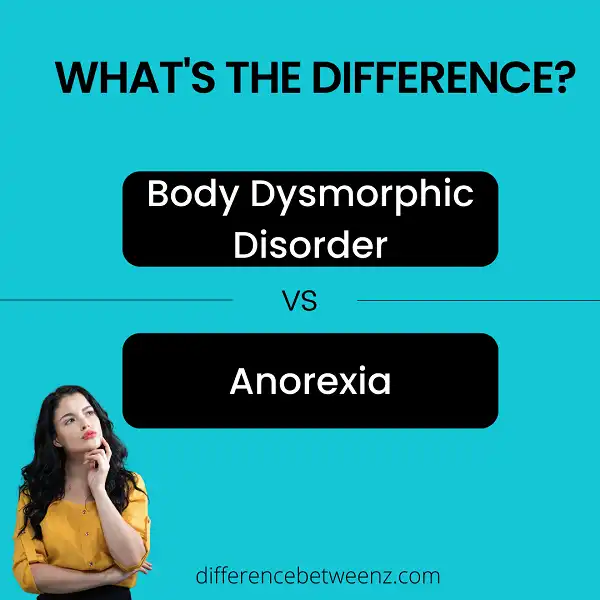Body dysmorphic disorder (BDD) is a mental disorder that causes people to become obsessed with the idea that some aspect of their appearance is severely flawed. This obsession can lead to compulsive behaviours, such as excessive grooming or dieting, in an attempt to hide or fix the flaw. Anorexia nervosa is a serious eating disorder that causes people to obsessively lose weight, often due to a fear of becoming fat. While both BDD and anorexia nervosa involve negative thoughts about appearance, there are key differences between the two disorders.
What is Dysmorphic Disorder?
Dysmorphic disorder is a mental disorder that can cause individuals to believe that their physical appearance is radically different from their actual appearance. Individuals with dysmorphic disorder often have a distorted view of their own bodies, and they may spend a lot of time obsessing over their perceived flaws.
The disorder can lead to significant distress and impair an individual’s ability to function in daily life. While the exact cause of the dysmorphic disorder is unknown, it is believed to be linked to a combination of genetic and environmental factors. Treatment for dysmorphic disorder usually involves a combination of psychotherapy and medication. With treatment, many individuals are able to improve their quality of life.
What is Anorexia?
- Anorexia nervosa, commonly referred to as simply anorexia, is an eating disorder characterized by self-starvation and excessive weight loss. People with anorexia generally have a distorted body image and see themselves as overweight even when they are significantly underweight.
- They may restrict their caloric intake by severely limiting the types and quantities of food they eat, exercising excessively, or purging calories through vomiting or laxative use. Anorexia can have dangerous health consequences, including organ damage, heart problems, and death. The exact cause of anorexia is unknown, but it is thought to be a combination of biological, psychological, and social factors.
- People with anorexia often have a history of trauma or abuse, low self-esteem, and perfectionism. Treatment for anorexia typically includes a combination of psychotherapy, nutritional counseling, and medication. With treatment, most people with anorexia recover from the disorder and go on to lead healthy lives.
Difference between Body Dysmorphic Disorder and Anorexia
Although body dysmorphic disorder (BDD) and anorexia share some features, they are two distinct conditions.
- People with BDD are fixated on a perceived flaw in their appearance that is not apparent to others or is only slight. As a result, they may spend a great deal of time trying to hide the “defect” or seeking reassurance from others.
- They may also engage in compulsive behaviors such as skin picking or mirror checking. In contrast, people with anorexia have a distorted view of their own body weight and shape. Even when they are severely underweight, they see themselves as overweight.
- As a result, they may Restrict their food intake, obsessively count calories, and exercise excessively. While people with BDD may be preoccupied with their appearance, people with anorexia are preoccupied with weight and shape.
- Both conditions can cause significant distress and interfere with daily functioning. However, people with anorexia are at risk for more medical complications, including heart problems, bone loss, and electrolyte imbalances.
Treatment for both conditions typically includes cognitive-behavioral therapy and medication.
Conclusion
Body dysmorphic disorder (BDD) and anorexia nervosa are two eating disorders that can have a serious impact on a person’s life. While they share some similarities, there are also key differences between the two conditions. we will take a closer look at these differences.
-Body Dysmorphic Disorder: BDD is characterized by an excessive preoccupation with one or more perceived defects or flaws in appearance. These flaws may be minor or imagined, but to the person with BDD, they can seem incredibly significant. The condition often leads to intense feelings of shame, humiliation, and insecurity.
-Anorexia Nervosa: Anorexia nervosa is a type of eating.


